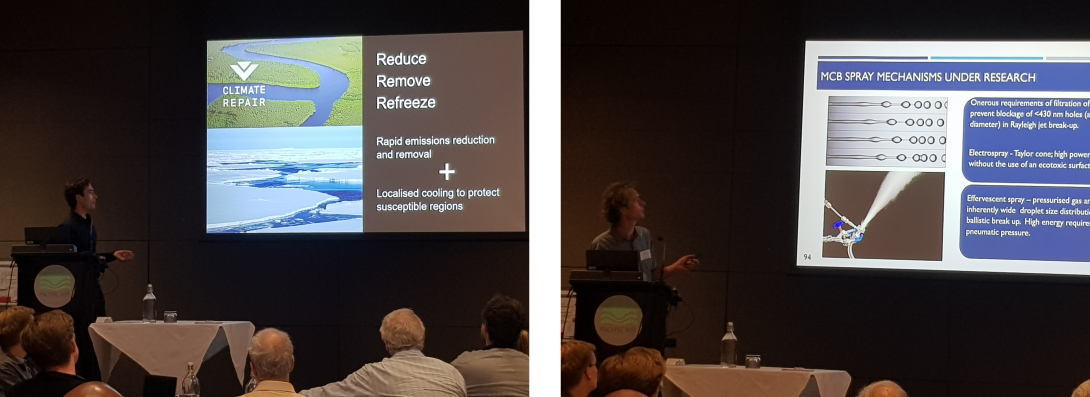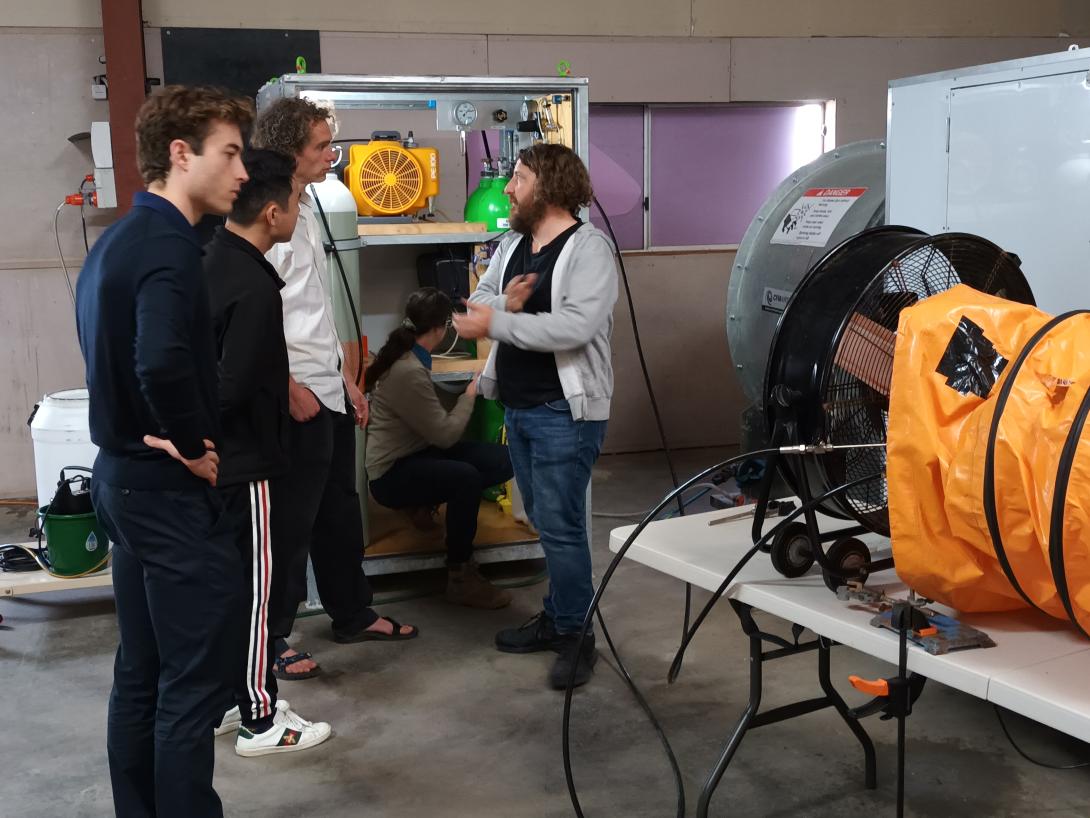
Cooling coral: Progress in reef restoration and adaptation
A warming climate has profound effects on marine life and ocean ecosystems. This reality has been brought to light of late, not least in the wake of high summer seawater temperatures recorded off the coast of Florida. Researchers at the Centre for Climate Repair (CCR) recently attended an event focused on protecting coral reefs from adverse global warming.
The Reef Restoration and Adaptation Program (RRAP) is a consortium of universities and research institutions focusing on research and solution deployment to protect, restore and build more resilient reefs. Within RRAP, the Cooling and Shading subprogram investigates solutions to mitigate coral bleaching by reducing the amount of solar radiation impacting reefs. The subprogram met in August for a workshop hosted by the National Marine Science Centre, Australia (Southern Cross University).
Dante McGrath and Edmund Reardon, representing CCR, presented findings from their experimental and computational work investigating the generation of seawater sprays conducive to marine cloud brightening. Below, Dante reflects on the experience:
Our work at CCR is motivated by a broad aim: to develop a system capable of efficiently generating seawater droplets of optimal size and concentration for cloud albedo enhancement. This aim is shared by the RRAP Cooling and Shading subprogram. Their field campaigns over the past three years represent giant leaps in the research and development of marine cloud brightening. Edmund and I were thrilled to participate in the workshop. We especially appreciated the breakout group discussions, which addressed key focus areas, such as spray nozzle development, cloud microphysics, and aerosol diagnostics.
The optimal salt crystal size for cloud brightening is a major unknown. Crystals that are too small may not nucleate, while crystals that are too large may induce rainfall. This formed the basis of a recurring theme throughout the workshop: finding the 'goldilocks zone' for marine cloud brightening. We agreed to maintain a dialogue going forward to ensure that gained insight and guiding assumptions are shared.
The workshop included a tour of the facilities at Southern Cross University (SCU). This peek 'behind the curtain' gave us an indication of the experimental rigours required to generate and measure seawater droplets at a laboratory scale. We are grateful to the SCU team for sharing the knowledge gained and lessons learned from past trials. Such insight will help us to develop our own nozzle development facility.
Aside from the engineering topics, it was a pleasure to hear from researchers focusing on other areas of coral reef protection. The results from marine modelling and coral bleaching experiments were fascinating.
Overall, the workshop was highly stimulating and informative. The experience was fuelled by a collective sense of motivation and enthusiasm. Edmund and I were grateful to be welcomed into the fold. The workshop was an ideal forum for sharing insights amongst oceanographers, aerosol scientists, cloud physicists, and fluid mechanics engineers. Fostering this interdisciplinary network will bolster marine cloud brightening research and development, informing future work.
The Reef Restoration and Adaptation Program is funded by the partnership between the Australian Government’s Reef Trust and the Great Barrier Reef Foundation, partners include the Australian Institute of Marine Science, CSIRO, the Great Barrier Reef Foundation, The University of Queensland, Queensland University of Technology, Southern Cross University and James Cook University.



